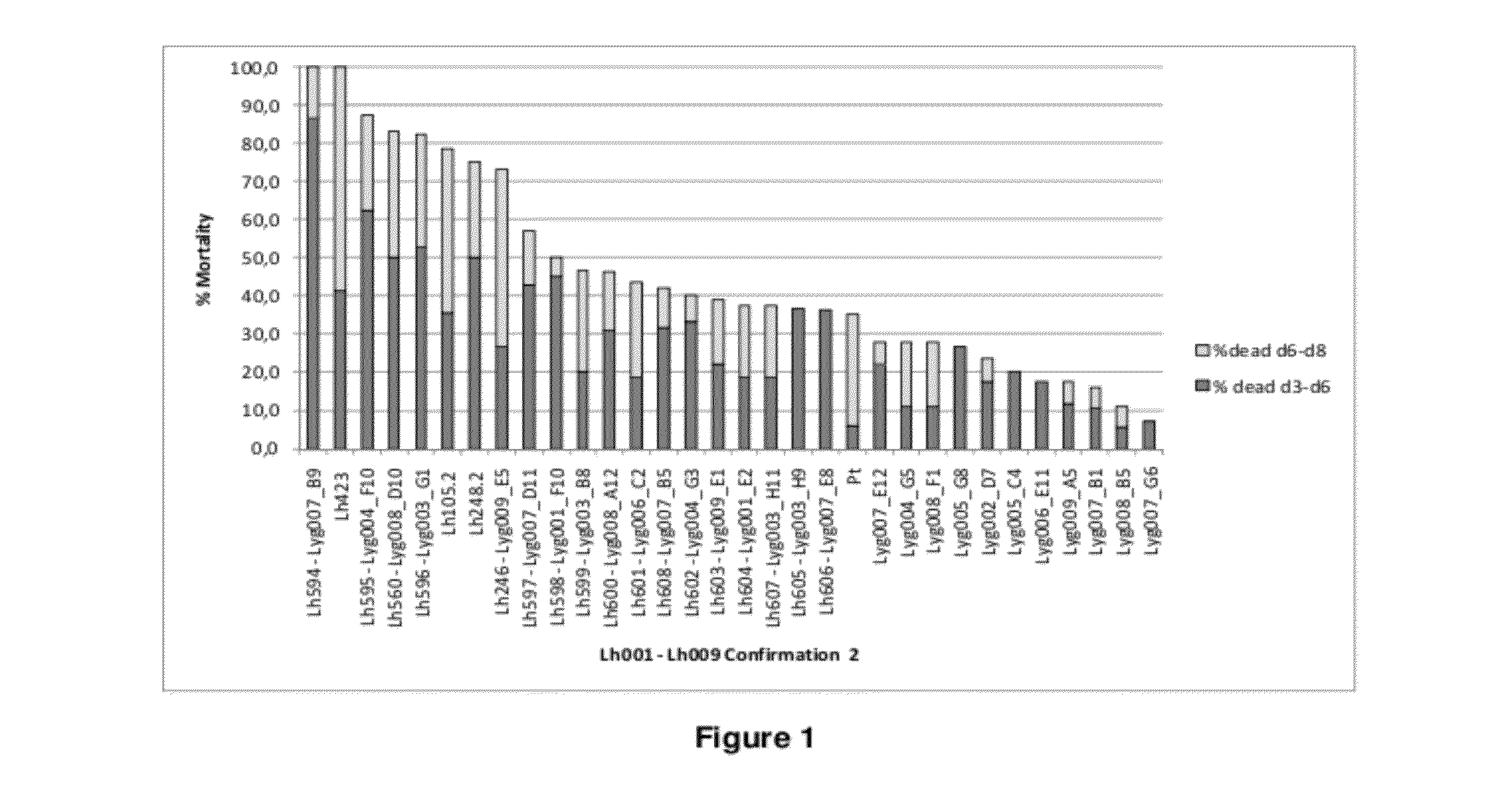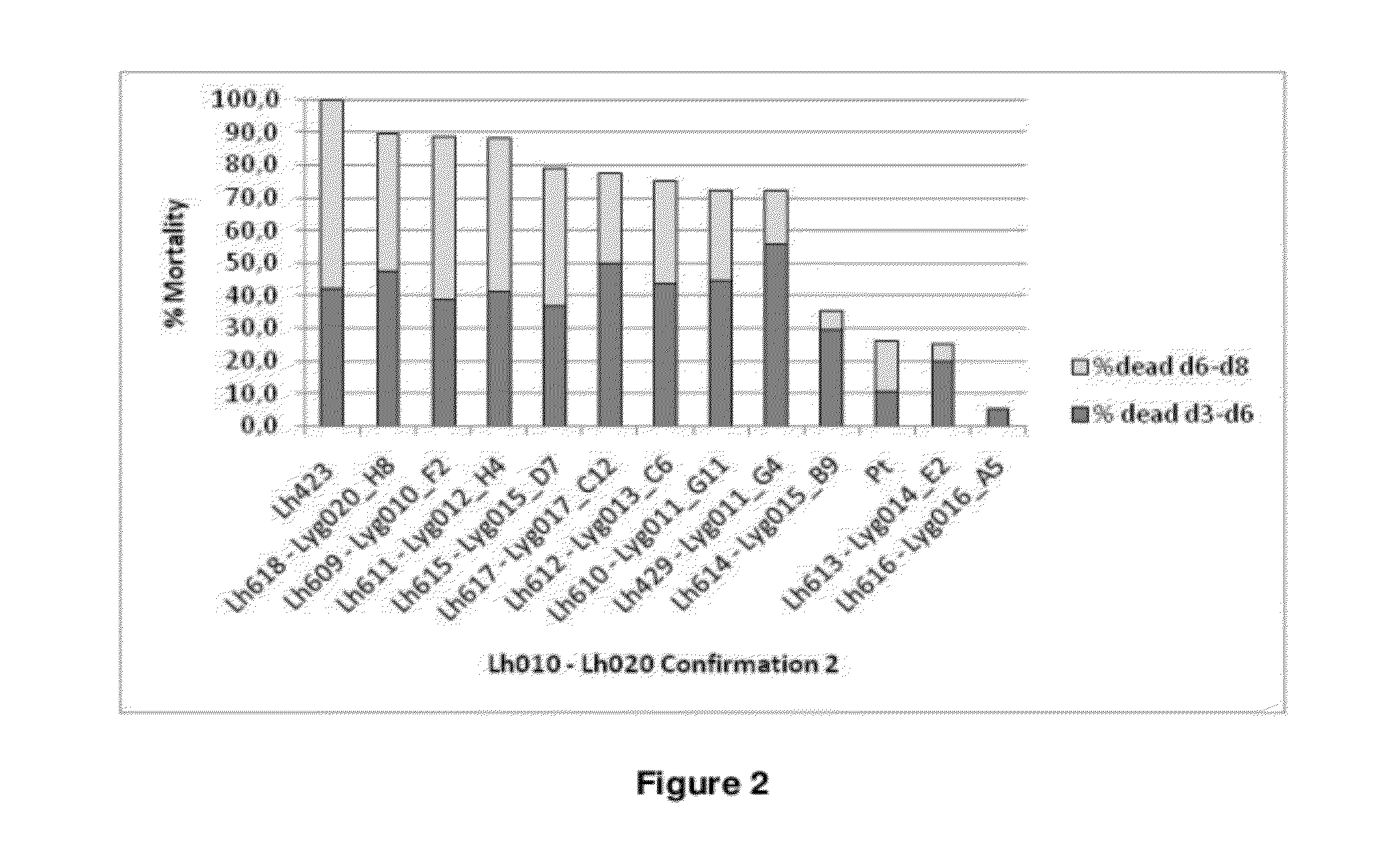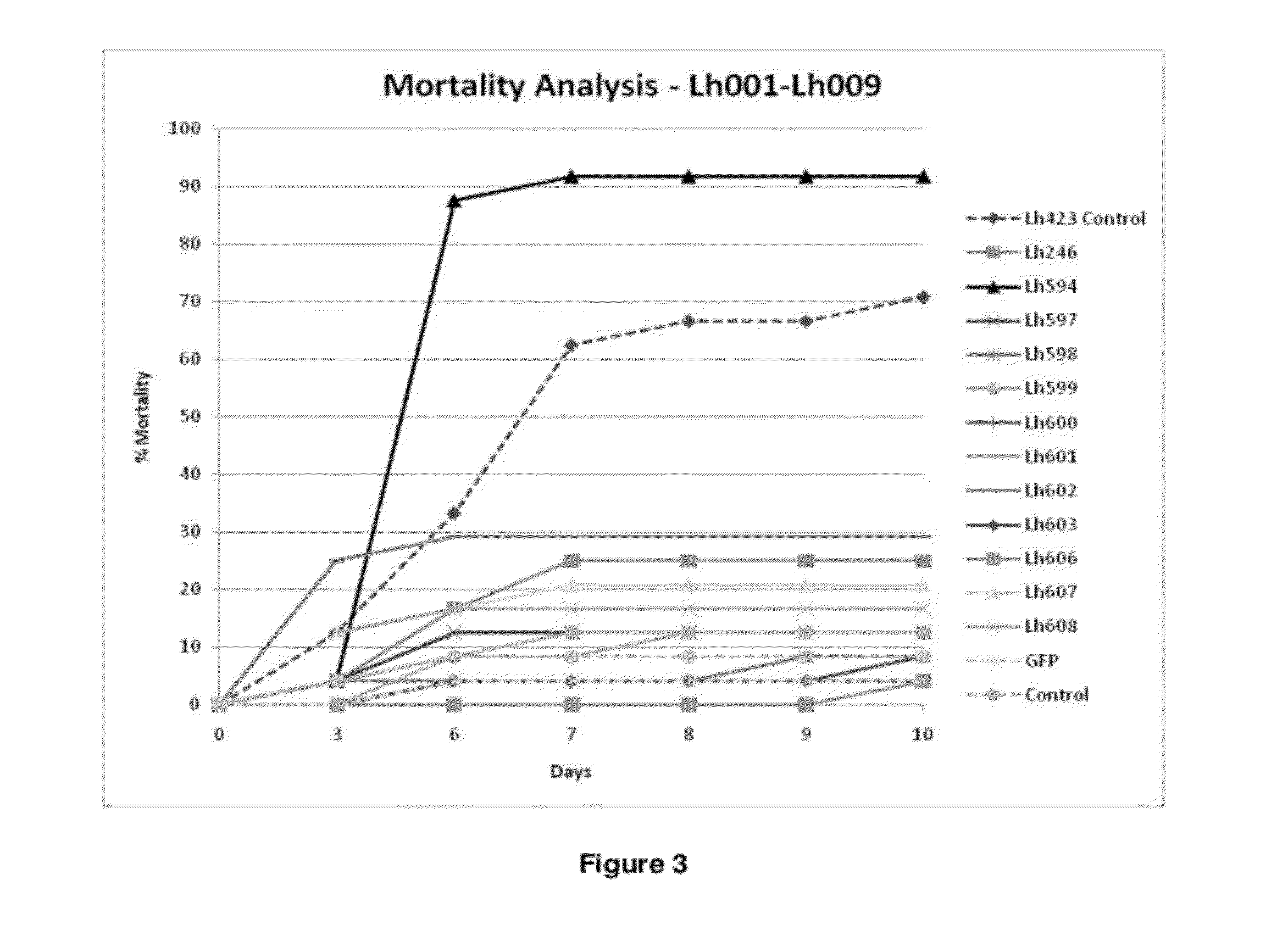Down-regulating gene expression in insect pests
a gene expression and insect pest technology, applied in the field of gene expression regulation of insect pests, can solve the problems of reducing plant yield, serious damage to crops, and significant damage, and achieve the effects of limiting the damage caused by the pest, preventing and/or controlling the infestation of insect pests, and impairing the ability of insect pests
- Summary
- Abstract
- Description
- Claims
- Application Information
AI Technical Summary
Benefits of technology
Problems solved by technology
Method used
Image
Examples
example 1
Identification of target genes in insect pest species
[0242]1.1. Lygus hesperus Normalized cDNA Library and Preparation of dsRNAs in Multiwell Plates for the Screening Assays
[0243]Nucleic acids were isolated from Lygus hesperus nymphs of different life stages, including freshly hatched nymphs 2, 4, 6 and 9 days old nymphs and adults. A cDNA library was prepared using the SMARTer™ PCR cDNA Synthesis Kit, following the manufacturer's instructions (Clontech Cat. No 634925). The cDNA library was normalized using the Trimmer kit (Evrogen Cat No NK001) and cloned in the PCR4-TOPO vector (Invitrogen). The normalization of the clones introduced M2 adapters (Trimmer Kit, Evrogen, SEQ ID NO 92: AAGCAGTGGTATCAACGCAG), oppositely oriented at each end of the clones. The recombinant vector constructs were transformed into cells of Escherichia coli strain TOP10 (Invitrogen). The transformed cells were subsequently diluted and plated so as to obtain single colonies or clones. The clones were checked...
example 2
In Vitro Production of Double-Stranded RNAs for Gene Silencing
[0256]2.2. Production of dsRNAs Corresponding to the Partial Sequences of the Lygus hesperus Target Genes
[0257]Double-stranded RNA was synthesized in milligram quantities. First, two separate 5′ T7 RNA polymerase promoter templates (a sense template and an antisense template) were generated by PCR. PCRs were designed and carried out so as to produce sense and antisense template polynucleotides, each having the T7 promoter in a different orientation relative to the target sequence to be transcribed.
[0258]For each of the target genes, the sense template was generated using a target-specific T7 forward primer and a target-specific reverse primer. The antisense templates were generated using target-specific forward primers and target-specific T7 reverse primers. The sequences of the respective primers for amplifying the sense and antisense templates via PCR for each of the target genes are provided in Table 4. The PCR product...
example 3
Troponin Pathway Screen
[0269]To enable testing of the Troponin pathway targets, in vitro produced dsRNAs corresponding to Lh619, Lh620, Lh621, Lh622, Lh622, Lh623, Lh624, Lh625 and Lh626 were synthesized and applied to L. hesperus in 10 days survival analysis bioassays. Briefly, one day old L. hesperus nymphs were placed in 96 well-plates with sucrose seals containing 0.54 / μl target dsRNA, supplemented with 5 μg / μl yeast tRNA. The plates were incubated for 3 days under standard Lygus rearing conditions. At day 3, 6 and 8, the diet seals were refreshed with seals containing Lygus diet only. Lh594 (Troponin I) was used as positive control and GFP dsRNA and sucrose diet were used as negative controls (FIG. 13). Four targets were then included in dose response curve analyses in an in vitro assay, with concentrations ranging from 0.4 to 0.025 μg / μl. Per condition, 24 one day old nymphs were tested in the 96 well-plate set-up, in sucrose diet supplemented with dsRNA and tRNA carrier. The ...
PUM
 Login to View More
Login to View More Abstract
Description
Claims
Application Information
 Login to View More
Login to View More - R&D
- Intellectual Property
- Life Sciences
- Materials
- Tech Scout
- Unparalleled Data Quality
- Higher Quality Content
- 60% Fewer Hallucinations
Browse by: Latest US Patents, China's latest patents, Technical Efficacy Thesaurus, Application Domain, Technology Topic, Popular Technical Reports.
© 2025 PatSnap. All rights reserved.Legal|Privacy policy|Modern Slavery Act Transparency Statement|Sitemap|About US| Contact US: help@patsnap.com



